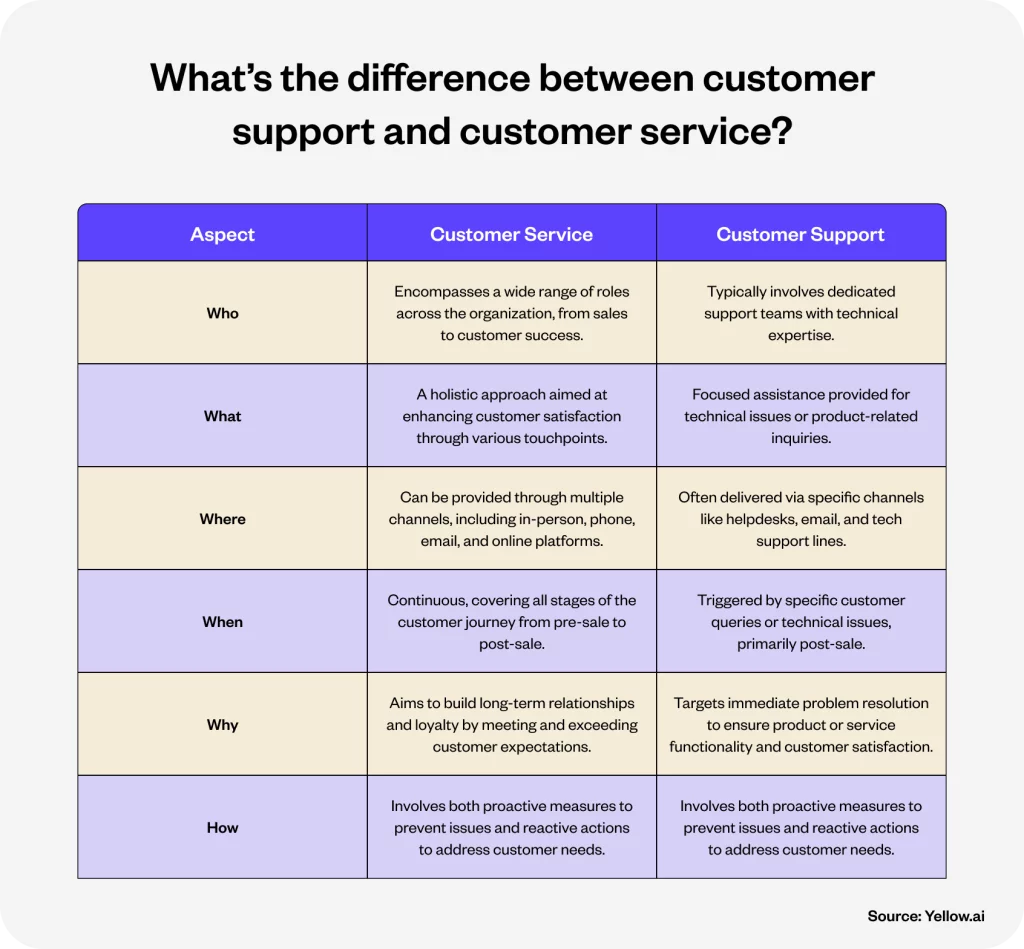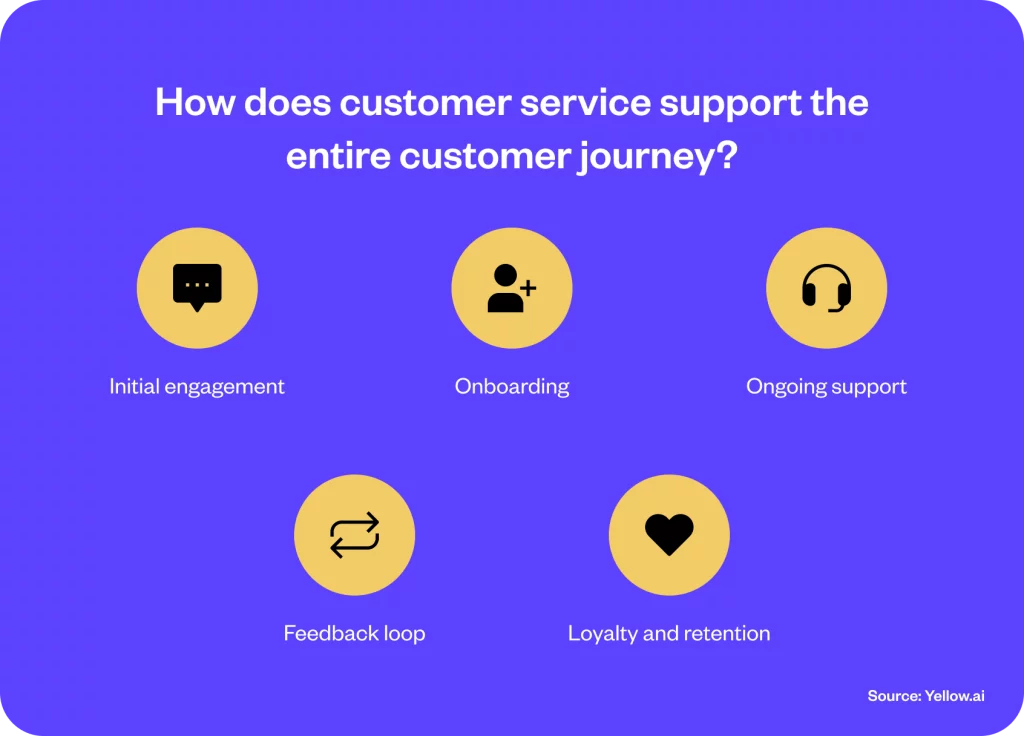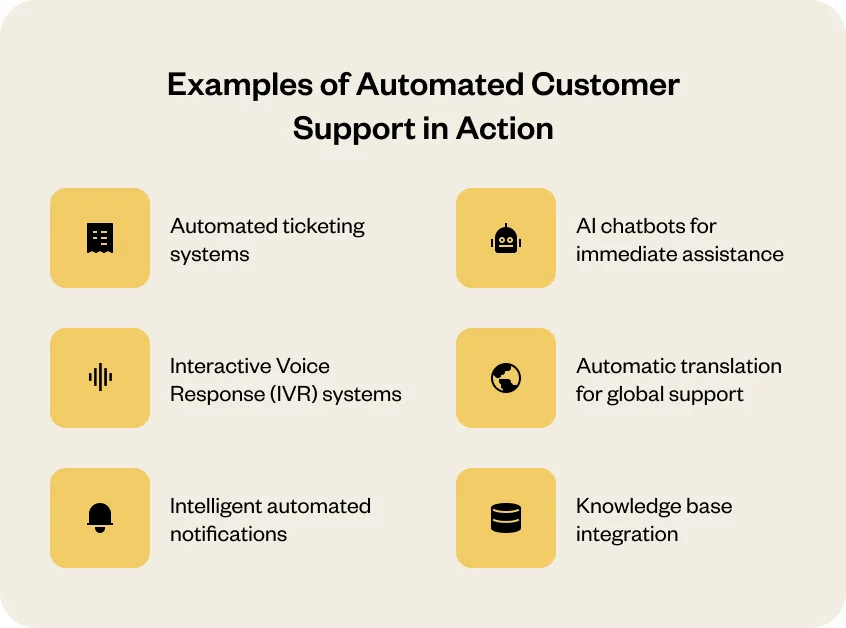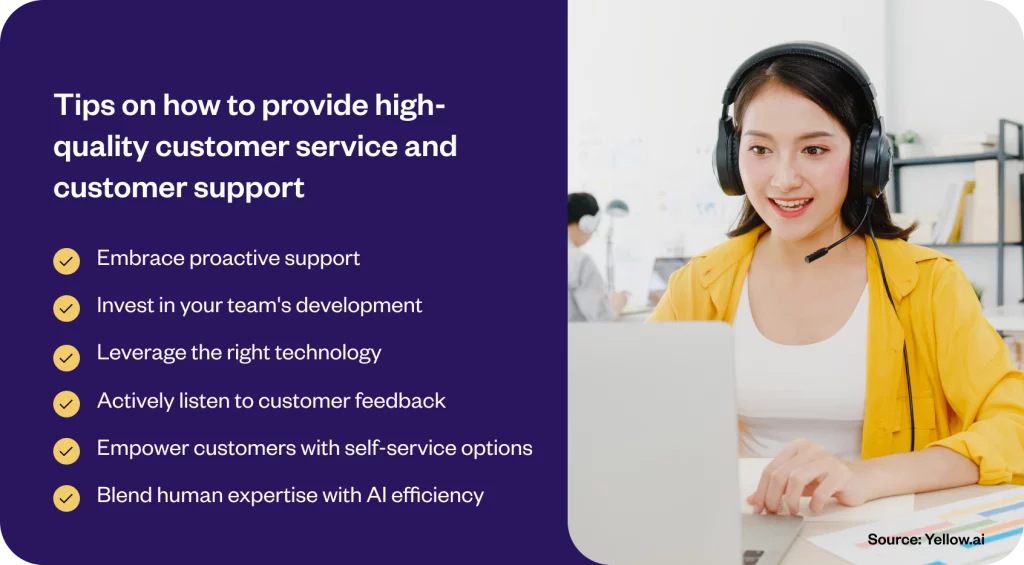Executive summary
Understanding the difference between customer service and customer support is strategic in the realm of customer interactions. This blog illuminates the distinct roles each plays in enriching the customer experience, drawing from industry insights and practical examples. With customer service encompassing the broad spectrum of customer assistance and customer support zeroing in on technical guidance, businesses are encouraged to refine their approach to both.
Introduction
In an era where customer loyalty can hinge on a single interaction, the clarity between customer service and customer support becomes a cornerstone of business strategy. At a glance, these concepts seem to blur together; both are about assisting customers, right? Yet, delve a little deeper, and you’ll discover the pivotal differences that can make or break the customer experience. Consider this: 73% of consumers say a good experience is key in influencing their brand loyalties. So, what sets customer service and customer support apart, and how can businesses leverage these distinctions not just to meet but exceed customer expectations?
This journey through the intricacies of customer interactions invites businesses to sharpen their focus, ensuring that every email, chat, or phone call translates to a step towards unwavering customer loyalty. As we unpack the nuances of service and support with real-world data and insights, we pave the way for a deeper understanding of their roles in the customer journey. It’s time to elevate your customer-first strategy, turning every support query and service opportunity into a building block for lasting relationships. Read on as we navigate this essential discourse, equipping your business with the knowledge to distinguish, implement, and excel in both realms of customer care.
What is customer service?
Customer service is the all-encompassing umbrella that covers every interaction to enhance customer satisfaction. It’s not just about solving problems but creating a positive, memorable experience at every touchpoint, from pre-sale questions to post-purchase support. Effective customer service involves understanding customer needs, providing timely solutions, and ensuring they derive maximum value from their purchase. It ultimately establishes loyalty and trust.
What is customer support?
Customer support, on the other hand, zeroes in on solving specific issues customers face with a product or service. It’s a specialized segment within customer service focused on technical assistance, troubleshooting, and addressing queries related to product functionality. By offering expert guidance and problem resolution, customer support plays a pivotal role in helping customers overcome obstacles to use and benefit from a product or service successfully.
Related read: How to scale customer support in your organization?
What’s the difference between customer support and customer service?
Understanding the nuanced distinctions between customer service and customer support is pivotal for businesses aiming to excel in customer relations. While both are integral to fostering positive customer experiences, their focuses, strategies, and outcomes differ markedly. Let’s delve into these differences to clarify how each function serves unique purposes within the broader objective of enhancing customer satisfaction.

| Aspect | Customer Service | Customer Support |
| Who | Encompasses a wide range of roles across the organization, from sales to customer success. | Typically involves dedicated support teams with technical expertise. |
| What | A holistic approach aimed at enhancing customer satisfaction through various touchpoints. | Focused assistance provided for technical issues or product-related inquiries. |
| Where | Can be provided through multiple channels, including in-person, phone, email, and online platforms. | Often delivered via specific channels like helpdesks, email, and tech support lines. |
| When | Continuous, covering all stages of the customer journey from pre-sale to post-sale. | Triggered by specific customer queries or technical issues, primarily post-sale. |
| Why | Aims to build long-term relationships and loyalty by meeting and exceeding customer expectations. | Targets immediate problem resolution to ensure product or service functionality and customer satisfaction. |
| How | Involves both proactive measures to prevent issues and reactive actions to address customer needs. | Primarily reactive, focusing on troubleshooting and resolving specific customer problems. |
This table encapsulates the essence of the distinctions between customer service and customer support. Customer service is the umbrella under which customer support resides, emphasizing a broad commitment to customer happiness and loyalty. In contrast, customer support is a specialized function that focuses on resolving technical issues and ensuring customers can use products or services without hindrance.
How does customer service support the entire customer journey?
In the modern marketplace, customer service is the backbone of a memorable customer journey. It plays a pivotal role from the first touchpoint through to repeat interactions. It’s the art of ensuring customers feel valued and supported, not just when they have issues but throughout their entire relationship with your brand. This comprehensive support system is crucial for businesses aiming to cultivate loyalty and foster long-term relationships.

Customer service teams are tasked with a multifaceted mission: to provide guidance, support, and insights across every stage of the customer lifecycle. This responsibility requires a blend of soft skills and analytical prowess, where representatives must be clear, patient, empathetic, and fully attuned to each customer’s specific needs and contexts. Let’s explore how customer service underpins various segments of the customer journey:
- Initial engagement: Here, service teams help potential customers understand your products or services, making personalized recommendations based on customer needs and preferences.
- Onboarding: They ensure a smooth transition for new customers, explaining processes and setting expectations for what your product or service can deliver.
- Ongoing support: Beyond handling immediate concerns, customer service involves proactive engagement, such as monitoring account health, addressing billing inquiries, and managing delivery expectations.
- Feedback loop: Collecting and acting on customer feedback is vital, whether through satisfaction surveys, social media interactions, or direct communication. This feedback informs product improvements and customer experience enhancements.
- Loyalty and retention: Service teams can encourage repeat business by upselling or offering timely discounts, but only when it genuinely adds value for the customer.
At every step, customer service aims to resolve issues, anticipate customer needs, offer relevant solutions, and make every interaction with your brand positive and memorable. It’s about weaving a seamless narrative where customers feel heard, valued, and appreciated, thereby laying the groundwork for a durable and rewarding relationship. This proactive and holistic approach to customer service is what sets market leaders apart.
6 Examples of automated customer service in action
Let’s explore some real-world examples of automated customer support and understand how they enhance business operations and customer experiences.

Tips for providing great customer service and customer support
Delivering high-quality customer service and support is pivotal in today’s business landscape, where a single negative experience can push a customer toward a competitor. With the right approach, businesses can not only retain customers but turn them into brand advocates. Here’s how to elevate your customer service and support game:

1. Embrace proactive support
Being proactive means anticipating your customers’ needs and addressing them before they reach out to you. This approach transforms the customer experience, making interactions seamless and reducing frustration. By analyzing customer behavior and feedback, you can identify common issues and address them through FAQs, tutorial videos, or direct communication.
Related read: Proactive customer service: Elevating experiences and fostering loyalty
Tips: Set up alerts for potential product issues, send preemptive emails about known issues or updates, and personalize proactive support based on customer activity.
Empower your customers with a support experience like no other

2. Invest in your team’s development
Your customer service and support team are the front line of your business. Investing in their training and development is crucial for ensuring they can provide empathetic and practical solutions. Regular training on product updates, customer handling techniques, and empathy can significantly improve their performance.
Related read: 15 Key customer service skills (How to develop them)
Tips: Create a continuous learning environment with regular workshops, encourage certification courses relevant to customer service, and implement a mentorship program for ongoing skill development.
3. Leverage the right technology
Technology is an excellent enabler for efficient customer service and support. A robust help desk software can centralize customer requests from various channels, ensuring no query is missed. Integrating AI can further streamline the process by automating routine tasks and allowing your team to focus on more complex issues.
Tips: Integrate your customer support software with CRM for a unified customer view, automate ticket routing based on issue complexity, and use chatbots for 24/7 basic support.
4. Actively listen to customer feedback
Listening to what your customers have to say about their experiences is invaluable. It helps you understand their needs, preferences, and pain points. Implementing feedback collection mechanisms across all touchpoints enables you to gather insights and make data-driven decisions to enhance service quality.
Related read: Customer Feedback: Types + 8 Ways to Collect It
Tips: Use post-interaction surveys to gather immediate feedback, monitor social media channels for untagged mentions, and conduct periodic in-depth interviews with customers for qualitative insights.
5. Empower customers with self-service options
Many customers prefer finding solutions on their own without having to wait for a response. A comprehensive, easily accessible knowledge base can satisfy this preference, improving customer satisfaction. Pairing this with an intelligent chatbot can provide instant assistance for common queries, reducing the load on your support team.
Related read: Self customer service: Navigating the new era of empowered consumers
Tips: Regularly update your FAQ section based on new queries, use video tutorials for complex issues, and optimize your self-service portal for easy navigation.
6. Blend human expertise with AI efficiency
While AI can efficiently handle a large volume of routine inquiries, complex or sensitive issues require a human touch. A strategy that combines the efficiency of AI with the empathy and problem-solving abilities of human agents can deliver a superior customer experience. This hybrid model ensures customers receive the right level of support at every interaction.
Tips: Implement an escalation protocol for AI to hand off complex issues to human agents seamlessly, train your team to handle transitions smoothly, and use AI insights to personalize human interactions.
By focusing on these areas, businesses can significantly enhance the quality of their customer service and support. It’s about creating a customer-centric culture where every interaction is an opportunity to impress and retain customers. Remember, in the realm of customer service and support, every detail counts, and the cumulative effect of these strategies can lead to a remarkable improvement in customer loyalty and business growth.
Looking to level up your customer-first strategy? Try Yellow.ai
In today’s competitive marketplace, enhancing both customer service and customer support is paramount for business growth and customer satisfaction. Yellow.ai stands at the forefront of revolutionizing how businesses engage with their customers by blending cutting-edge technology with a deep understanding of human interactions. Our platform offers an array of features designed to transform your customer-first strategy into a seamless, efficient, and highly personalized experience.
- AI-powered chatbots: Our advanced AI chatbots can understand and resolve customer queries in real-time, offering immediate support without waiting.
- Omnichannel support: Yellow.ai ensures your business is where your customers are, offering support across various platforms such as web, mobile, social media, and more, providing a consistent experience everywhere.
- Personalization at scale: Leveraging AI and machine learning, Yellow.ai provides personalized interactions tailored to each customer’s history and preferences, enhancing satisfaction and loyalty.
- Proactive engagement: Move beyond reactive support by anticipating customer needs and addressing them proactively, thereby reducing potential issues and enhancing the customer journey.
- Analytics and insights: With Yellow.ai, gain valuable insights into customer behavior and support performance, enabling data-driven decisions to refine and improve your strategies continually.
Book a demo today to discover how Yellow.ai can elevate your customer service and support, driving better engagement, satisfaction, and loyalty.
Success stories

Indigo boosts customer satisfaction
Learn how Indigo boosts customer satisfaction to 87% with AI automation

Hyundai boosts revenue and improves customer service with AI automation
Explore how Yellow.ai’s automation led to ~1000 car sales, a 10% retail conversion rate, and over 1.4 million user impressions

Pelago reimagines customer experience with generative AI powered conversational AI agents
Within a mere six weeks of going live, Pelago not only onboarded over 5,000 users but also achieved a striking 50% deflection rate!
The final thoughts
The landscape of customer interactions is ever-evolving, with the distinction between customer service and customer support becoming more nuanced yet increasingly critical. This blog has journeyed through the vital differences, illustrating how each plays a unique role in crafting a memorable customer experience. As we look ahead, the integration of innovative solutions like Yellow.ai into your customer-first strategy not only bridges the gap between these two essential functions but also propels your business toward new heights of customer engagement and satisfaction.
In wrapping up, remember that the heart of exceptional customer relations lies in understanding, anticipating, and meeting your customers’ needs at every turn. With technology like Yellow.ai, businesses have the tools not just to meet but exceed expectations, setting the stage for a future where every customer interaction is an opportunity to dazzle, delight, and retain. The journey towards excellence in customer service and support is ongoing, but with the right approach and technology, it promises rewarding outcomes for businesses and their customers alike.


























